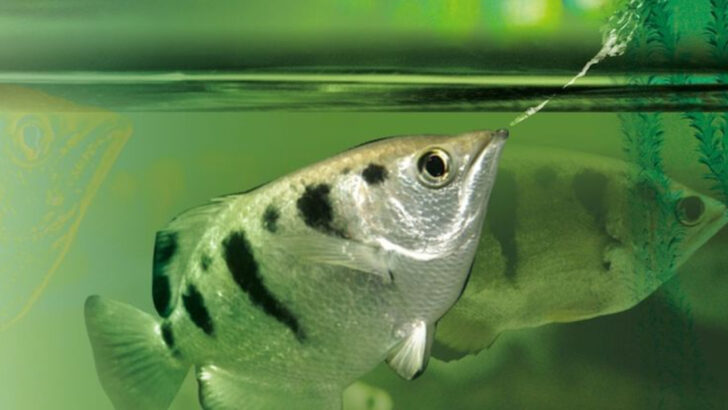They may be small, but they’re anything but helpless. In the wild, being tiny often means being hunted. But these creatures didn’t just survive—they became masters of defense. From explosive chemicals to armor tougher than nails, nature equipped these mini-beasts with jaw-dropping tricks to stay alive. Some can vanish in plain sight. Others fight back with venom, spikes, or even blinding flashes of light. Don’t let their size fool you—these animals are armed and dangerous, just on a smaller scale. Here are 15 tiny creatures whose defense mechanisms are straight out of a science fiction movie.
Bombardier Beetle
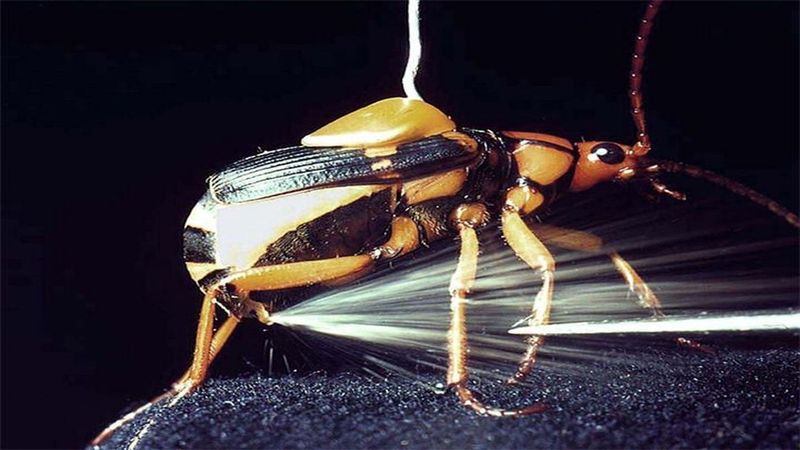
When threatened, the Bombardier Beetle releases a boiling hot chemical spray from its abdomen, a defense mechanism that has intrigued scientists for decades. This tiny beetle’s explosive defense reaches temperatures over 100 degrees Celsius, deterring predators effectively. Its ability to aim and fire this chemical concoction with precision makes it a fascinating subject of biochemical study. Originating from diverse habitats, this beetle is proof that size doesn’t dictate power. An intriguing quirk: its defense mechanism is like a miniaturized chemical warfare plant, inspiring biomimicry in modern technology.
Pistol Shrimp
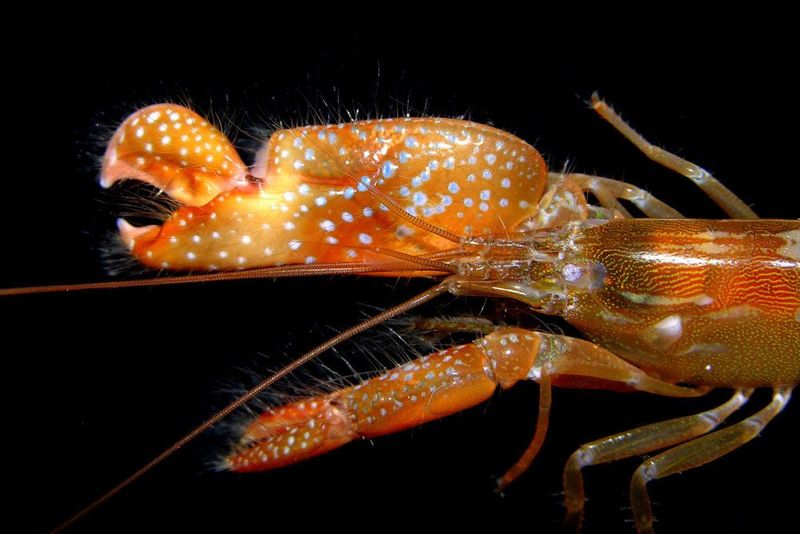
The Pistol Shrimp is not just a quirky marine dweller; it’s armed with one of the most potent weapons in nature—a supersonic claw that snaps shut with incredible force. This snap creates a cavitation bubble, which implodes with a sound louder than a gunshot, stunning or even killing prey. Found in tropical reefs, this shrimp’s powerful snap is both a hunting tool and a defensive weapon. Despite its small size, it wields this sonic boom with finesse, a true testament to nature’s inventiveness. Often, it’s the loudest in the reef, despite its diminutive stature.
Hagfish
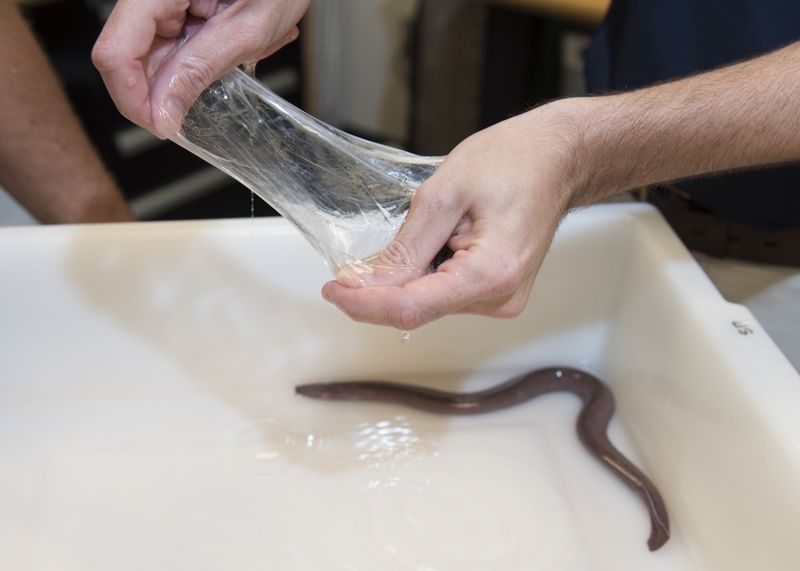
Ever heard of a fish that can turn water into slime? Meet the Hagfish, a deep-sea marvel with a unique defensive trait. When threatened, it secretes copious amounts of slime, clogging the gills of predatory fish. This slime is not only a deterrent but also a survival strategy against predators. Found in ocean depths worldwide, this remarkable ability allows the Hagfish to slip away from danger. Its slime-making prowess is so effective that it has inspired research into sustainable materials. Truly, the Hagfish is a master of slippery escapes.
Sea Cucumber
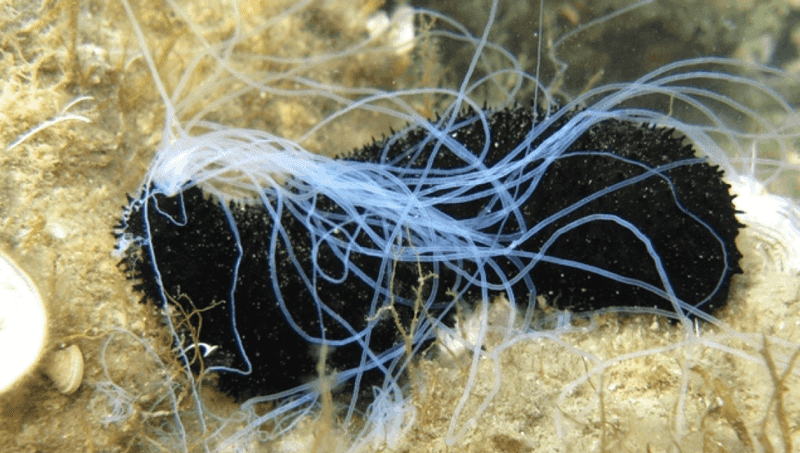
The Sea Cucumber might seem like a gentle ocean dweller, but it hides a surprising defense mechanism. When threatened, it can expel its internal organs, which are toxic to predators, and later regenerate them. This auto-evisceration is both a defense and a clever escape tactic, allowing the creature to survive predation. These echinoderms inhabit ocean floors worldwide, showcasing nature’s ability to recycle even its defense strategies. Sea Cucumbers are not just passive creatures; they’re dynamic defenders of the deep.
Horned Lizard

The Horned Lizard is not your average reptile; it has a truly bizarre defense mechanism. When threatened, it can squirt blood from its eyes, a tactic that confuses and deters predators. This blood-squirting defense is both a shock and awe tactic, creating a vivid deterrent in the dry desert landscapes it calls home. The blood contains chemicals that are unpleasant to predators, making this lizard not just a master of camouflage but also a surprising combatant. Truly, in the animal kingdom, the Horned Lizard stands out with its unique defense.
Portuguese Man O’ War
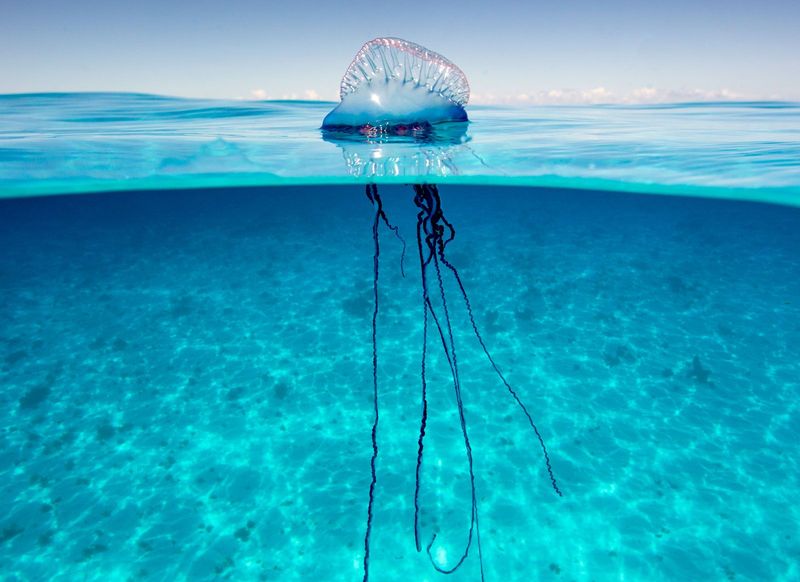
Despite resembling a jellyfish, the Portuguese Man O’ War is a siphonophore with a formidable defense. Its tentacles are equipped with venomous nematocysts capable of delivering painful stings to deter predators and capture prey. This floating terror of the seas roams warm ocean currents, its vivid colors a warning to potential threats. With tentacles that can extend up to 165 feet, it remains one of the ocean’s most efficient defenders. Its sting is not just a defense but a means of survival, securing its place in the marine food chain.
Tardigrade
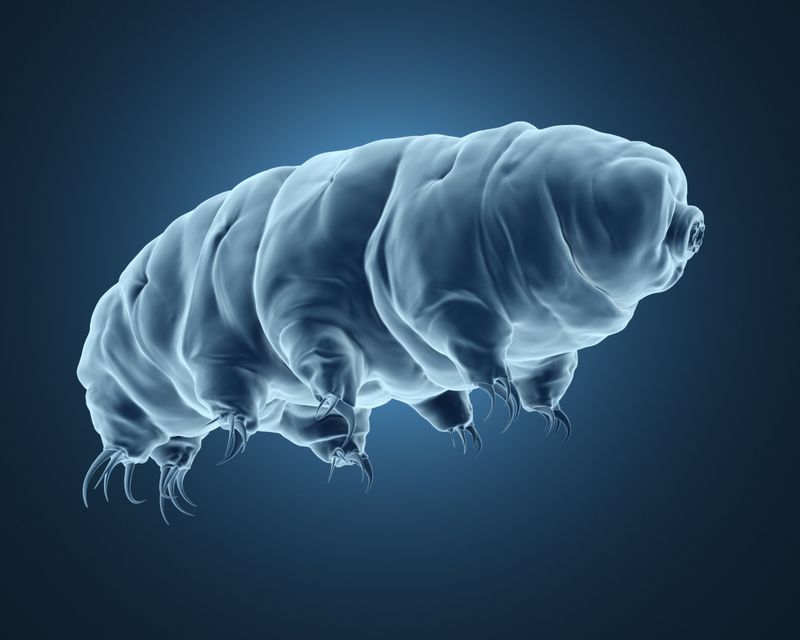
Meet the Tardigrade, a microscopic creature that defies extremes. Known for their resilience, Tardigrades can survive radiation, extreme temperatures, and even the vacuum of space. Their cryptobiosis ability allows them to endure harsh conditions by entering a state of suspended animation. Found in various environments, from the ocean floor to mountaintops, they embody survival against odds. These “water bears” are nature’s ultimate survivors, inspiring scientists to study their genome for potential applications in biotechnology. Their tiny size belies a defense strategy that makes them nearly indestructible.
Box Jellyfish
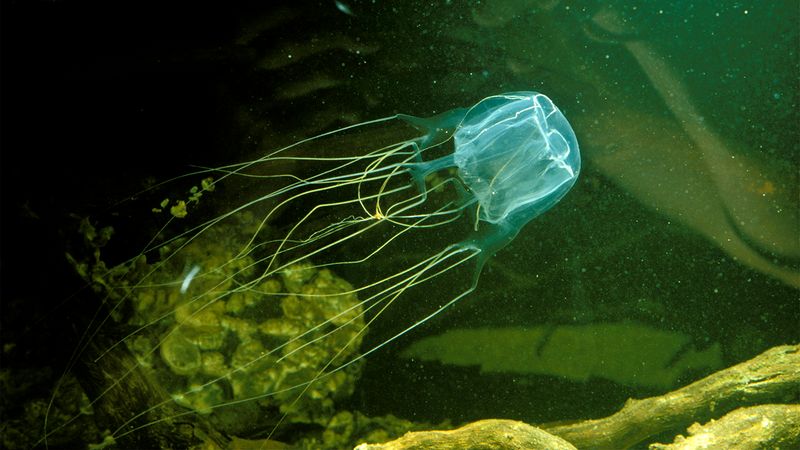
The Box Jellyfish is a marvel of marine defense. Its transparent, cube-shaped bell and long, venomous tentacles possess a sting that can be fatal to humans. This venom acts quickly, immobilizing prey and deterring potential predators. Found in Indo-Pacific waters, the Box Jellyfish is both a beauty and a beast of the seas. Its lethal sting has earned it a fearsome reputation, but it remains an essential part of ocean ecosystems. A silent sentinel, it navigates the waters with deadly grace, ensuring its place among nature’s most efficient defenders.
Octopus
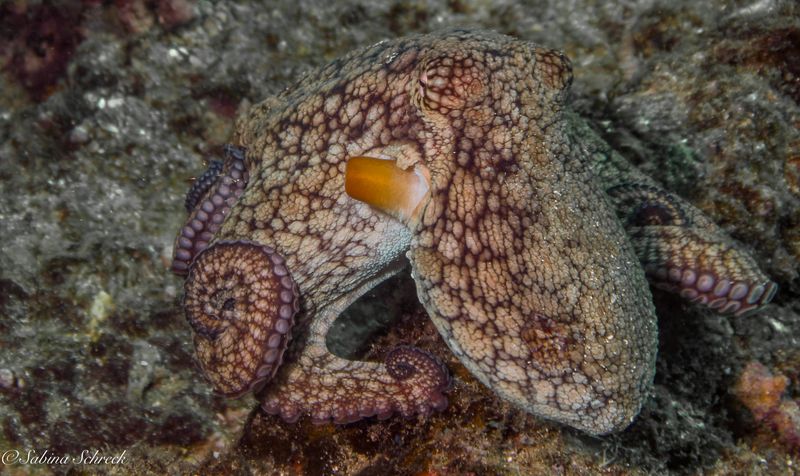
Octopuses are the shape-shifters of the sea, with a remarkable ability to change color and texture to blend into their surroundings. This camouflage is not just a means of hiding but also a defense against predators. Equipped with ink sacs, they can cloud the water, making a quick getaway. Found in oceans around the world, these intelligent cephalopods use their wits and adaptability as their primary weapons. Their dynamic defense strategies showcase the incredible versatility of these marine animals. In their underwater realm, octopuses reign as masters of deception and survival.
Africanized Honey Bee
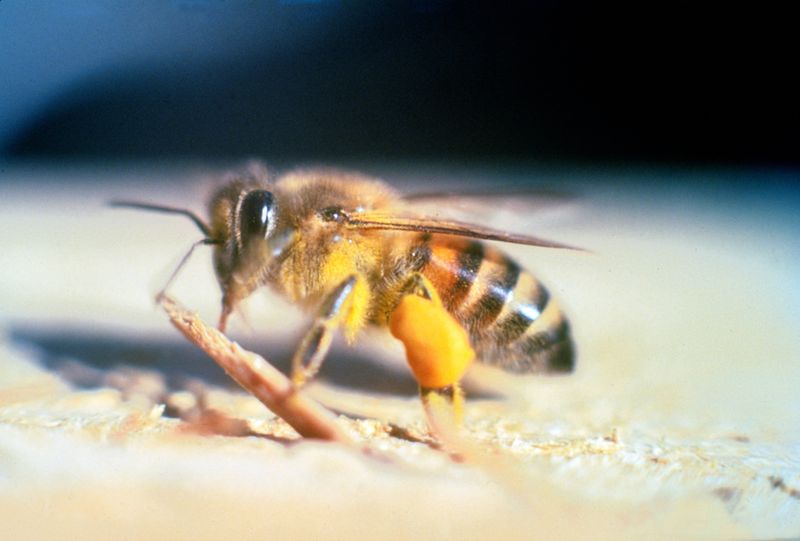
Known colloquially as “killer bees,” Africanized Honey Bees possess a fierce defense mechanism. They are highly aggressive and will swarm en masse to protect their hive from perceived threats. This hyper-defensive behavior is a result of selective breeding and adaptation. Found primarily in the Americas, their swarming defense is both a deterrent and a means of hive survival. Although their sting is no more potent than other bees, the sheer number of attackers can be overwhelming. These bees remind us of the power in numbers, showcasing nature’s team-based defense strategies.
Electric Eel
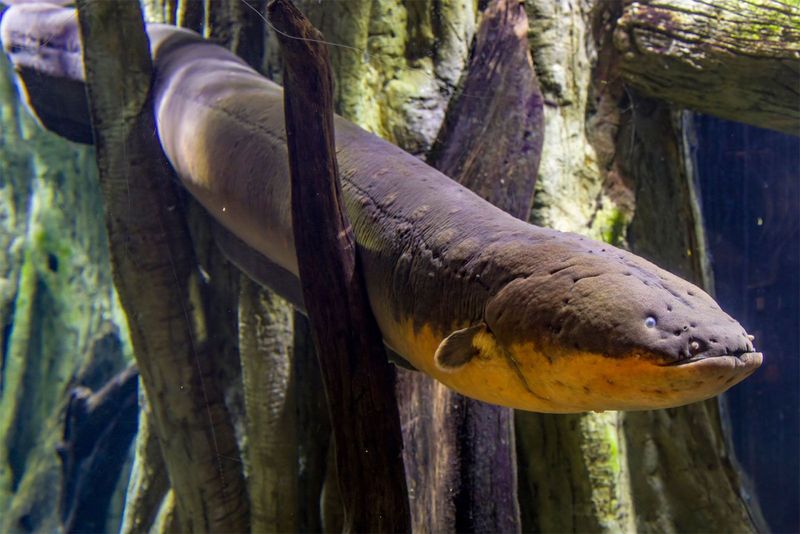
The Electric Eel, a freshwater marvel, wields electricity as its defense and hunting tool. Capable of generating powerful electric shocks, it’s an apex predator in its riverine habitat. These shocks can stun prey or deter threats, making them formidable in their environment. Native to the Amazon and Orinoco basins, these eels deploy their electric charge with precision. Despite their name, they’re more closely related to catfish than true eels. Their ability to harness electricity showcases an extraordinary adaptation, a reminder of the diverse strategies evolution has crafted for survival.
Skunk

Skunks are renowned for their potent defense mechanism—a noxious spray that can deter even the boldest of predators. This malodorous spray, emitted from glands beneath their tail, can reach up to 10 feet and cause temporary blindness. Found across the Americas, they are a quintessential example of chemical defense in mammals. While their spray is notorious, skunks often give warning signs before deploying it, showcasing their preference for peaceful resolutions. Yet, when necessary, their pungent odor leaves an unforgettable impression. Truly, skunks have mastered the art of olfactory defense.
Archerfish
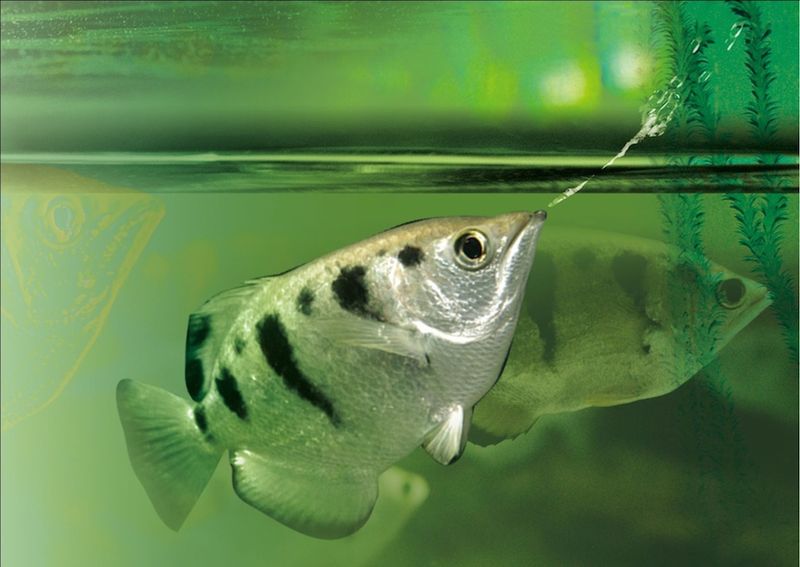
The Archerfish is not your typical fish; it has a unique hunting skill that doubles as a defense mechanism. By shooting jets of water with pinpoint accuracy, it can dislodge insects resting above water, making it one of the few animals that can manipulate water as a tool. Found in mangroves and estuaries, this fish showcases unparalleled precision. The ability to shoot water jets is both a hunting technique and a deterrent against aerial threats, illustrating the ingenuity found in aquatic environments. The Archerfish is a reminder of nature’s creativity and adaptability.
Diving Bell Spider
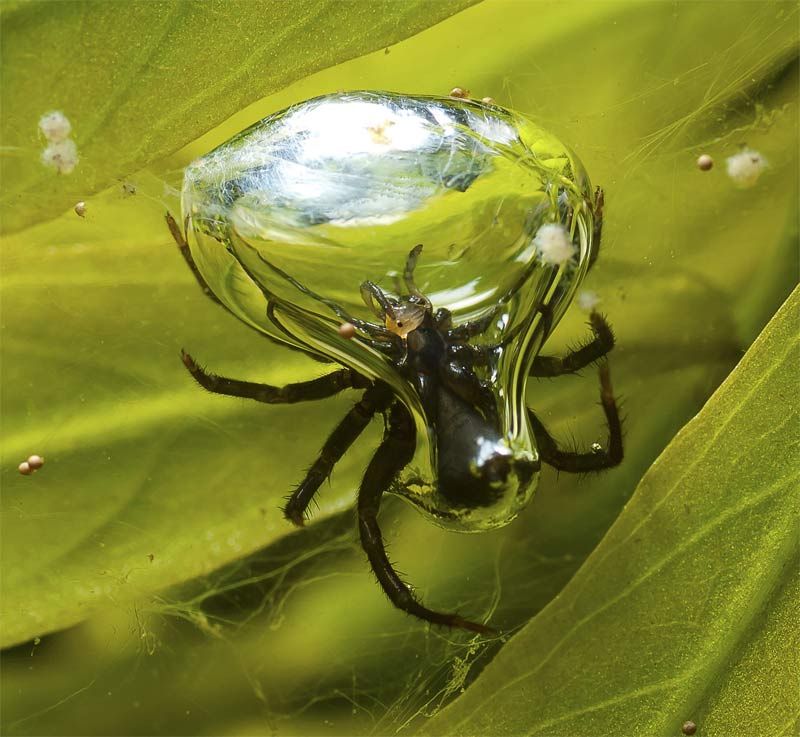
The Diving Bell Spider is an aquatic arachnid with a unique survival strategy. It constructs an underwater web filled with air, allowing it to live and hunt submerged. This diving bell provides a refuge from predators and a base for capturing prey. Found in freshwater ponds across Europe and Asia, its adaptation to an aquatic lifestyle is a marvel of nature’s engineering. The spider’s ability to breathe underwater highlights its ingenuity, creating a niche where few other spiders can thrive. Its bubble serves as both home and shield, an extraordinary example of adaptation.
Peacock Mantis Shrimp
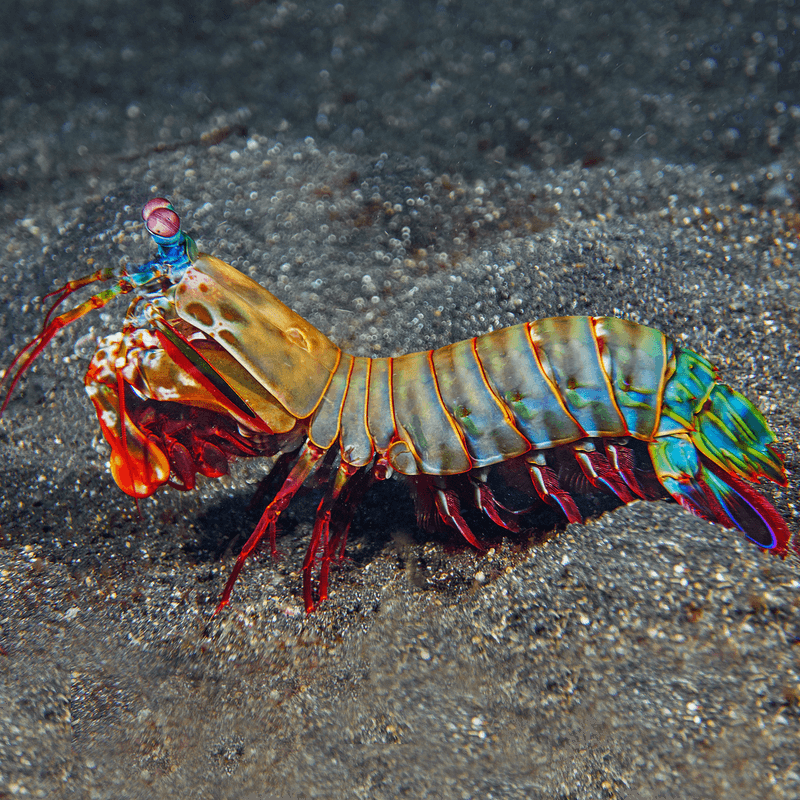
The Peacock Mantis Shrimp is a vibrant predator with a punch that rivals a bullet. Equipped with club-like appendages, it can strike with incredible speed and force, capable of breaking shells and even aquarium glass. This striking ability serves both as a hunting tool and a robust defense against threats. Residing in tropical marine habitats, its vivid colors are as much a warning as they are beautiful. The mantis shrimp’s striking prowess is an excellent example of nature’s ability to combine beauty with brawn, making it a formidable contender in its underwater world.

